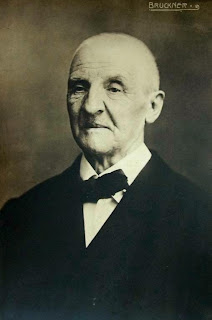Information
Composer: Anton Bruckner
CD1:
Philharmoniker Hamburg
Simone Young, conductor
Date: 2008
Label: Oehms
http://www.oehmsclassics.de/artikel.aspx?voeid=3500
CD1:
- Symphony No. 8 in C minor (1887, ed. Nowak): 1. Allegro moderato
- Symphony No. 8 in C minor (1887, ed. Nowak): 2. Scherzo. Allegro moderato - Trio. Allegro moderato
- Symphony No. 8 in C minor (1887, ed. Nowak): 3. Adagio. Feierlich langsam, doch nicht schleppend
- Symphony No. 8 in C minor (1887, ed. Nowak): 4. Finale. Feierlich, nicht schnell
Philharmoniker Hamburg
Simone Young, conductor
Date: 2008
Label: Oehms
http://www.oehmsclassics.de/artikel.aspx?voeid=3500
----------------------------------------------------------------------------
Review
Simone Young has been working her way through a cycle of the very first versions of those Bruckner symphonies that were later heavily revised; her interpretations have been effective so far, and this latest installment is no exception. This is the first version, 1878, of Bruckner’s Eighth, an edition that has been issued on disc several times in the past; the most easily available have been Eliahu Inbal/Frankfurt RSO on various Teldec releases (75:35), Georg Tintner/Ireland NSO on Naxos (89:28), and Dennis Russell Davies/Linz Bruckner Orchestra on Arte Nova (80:30). As you can see, Young’s is one of the more leisurely versions of this edition—compared to Inbal, she takes a lot more time in the outer movements—but, without rushing, she keeps a tight rein on the unruly score, always maintaining a focused through line, not letting the music break apart into discrete units, and refusing to wallow in the moderate-paced and slow sections. Yet she does allow enough elasticity for the smaller details to emerge along the way. The performance is notable for its clarity and balance of voices, although at the climaxes the woodwinds can’t make themselves heard in competition with the strings and blaring brass.
It’s especially striking how Young illuminates how beholden Bruckner’s first movement is to the opening movement of Beethoven’s Ninth, although the episodic Bruckner lacks Beethoven’s staying power—Bruckner pauses for breath often, whereas Beethoven maintains unbearable tension throughout his movement. At least Young doesn’t let Bruckner sound like he’s stepping off the podium every few bars just to get his heart rate down, which can happen in other performances; she finds natural rhythms in the periodic release of tension. This version of the first movement, by the way, ends triple forte, not softly.
Other major differences between this and later editions: the trio of the second movement is substantially different; the first three movements require only double woodwinds and four horns, the wind section not expanded until the final movement; the Adagio is 38 bars longer, and includes more cymbal crashes (and a different climactic key); the Finale is 62 bars longer. I especially admire Young’s treatment of the Adagio, which is played with clarity and integrity, not soppy piety; she’s very good at holding it together without slighting its internal contrasts.
The SACD surround mix has lots of presence, although there are balance problems at the climaxes, as noted. Personally, I think most of Bruckner’s later changes to the score improved the Symphony, but Simone Young and her Hamburg forces make an exceptionally strong case for this original version.
-- James Reel, FANFARE
More reviews:
http://www.gramophone.co.uk/review/bruckner-symphony-no-8-1
http://www.musicweb-international.com/classrev/2013/Jan13/Bruckner_sy8_OC638.htm
http://www.classical.net/music/recs/reviews/o/oeh00638a.php
http://www.allmusic.com/album/bruckner-sinfonie-nr-8-mw0001947020
http://www.amazon.com/Bruckner-Symphony-No-8-A/dp/B002ED6VS6
----------------------------------------------------------------------------
Anton Bruckner (4 September 1824 – 11 October 1896)) was an Austrian composer. His symphonies are considered emblematic of the final stage of Austro-German Romanticism because of their rich harmonic language, strongly polyphonic character, and considerable length. Bruckner composed eleven symphonies, scored for a fairly standard orchestra. His orchestration was modeled after the sound of his primary instrument, the pipe organ.
***
Simone Young (born 2 March 1961 in Sydney) is an Australian conductor. She studied composition, piano and conducting at the Sydney Conservatorium of Music. Young was chief executive of the Hamburg State Opera and chief conductor of the Philharmoniker Hamburg from 2005 to 2015. She was the first woman to have recorded a cycle of Bruckner's Symphonies and Wagner's Ring Cycle.
----------------------------------------------------------------------------
FLAC, tracks
Links in comment
Enjoy!




This comment has been removed by the author.
ReplyDeleteCD1
ReplyDeleteMEGA
http://adf.ly/1SuBoT
CD2
MEGA
http://adf.ly/1SuBoV